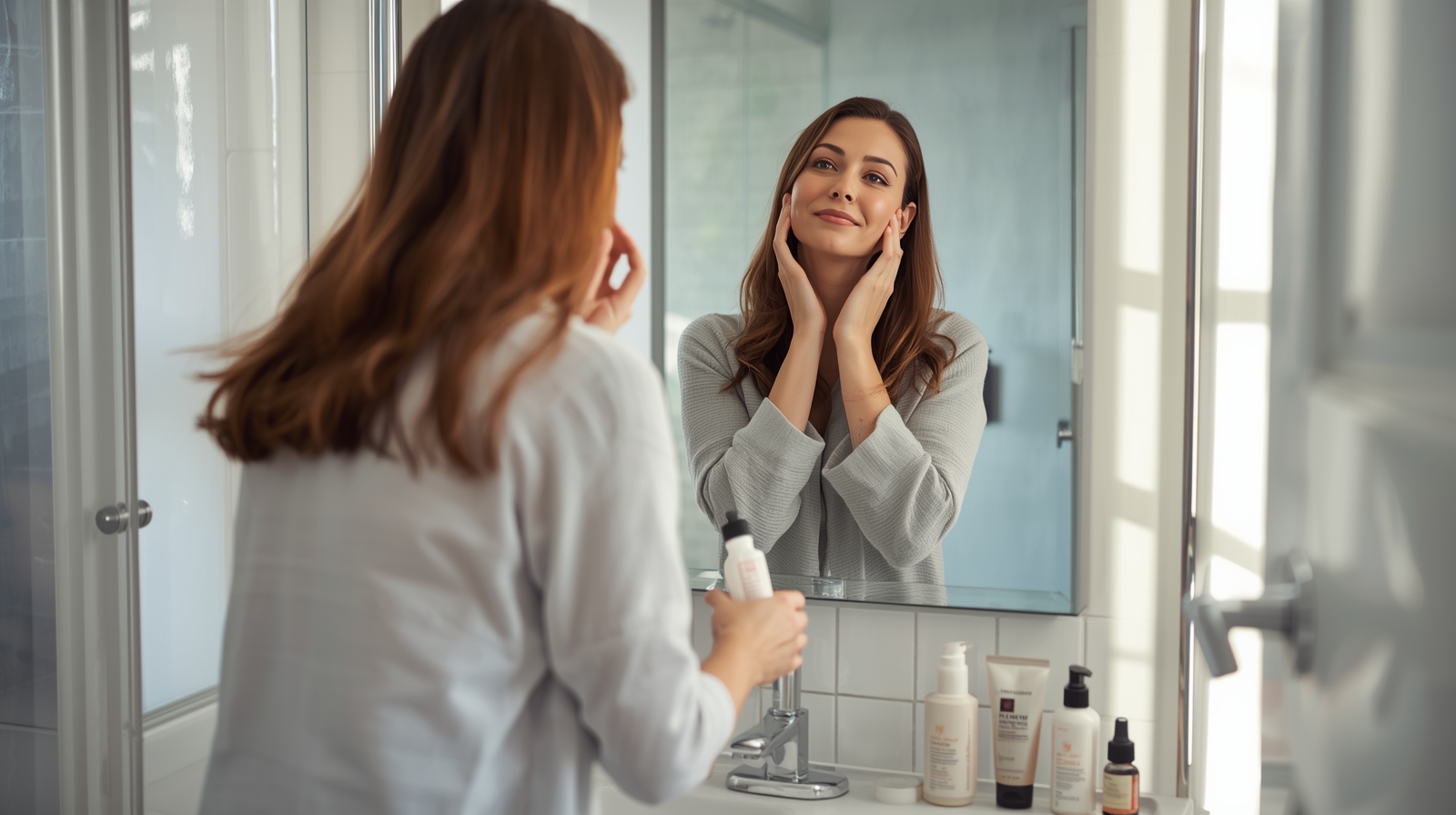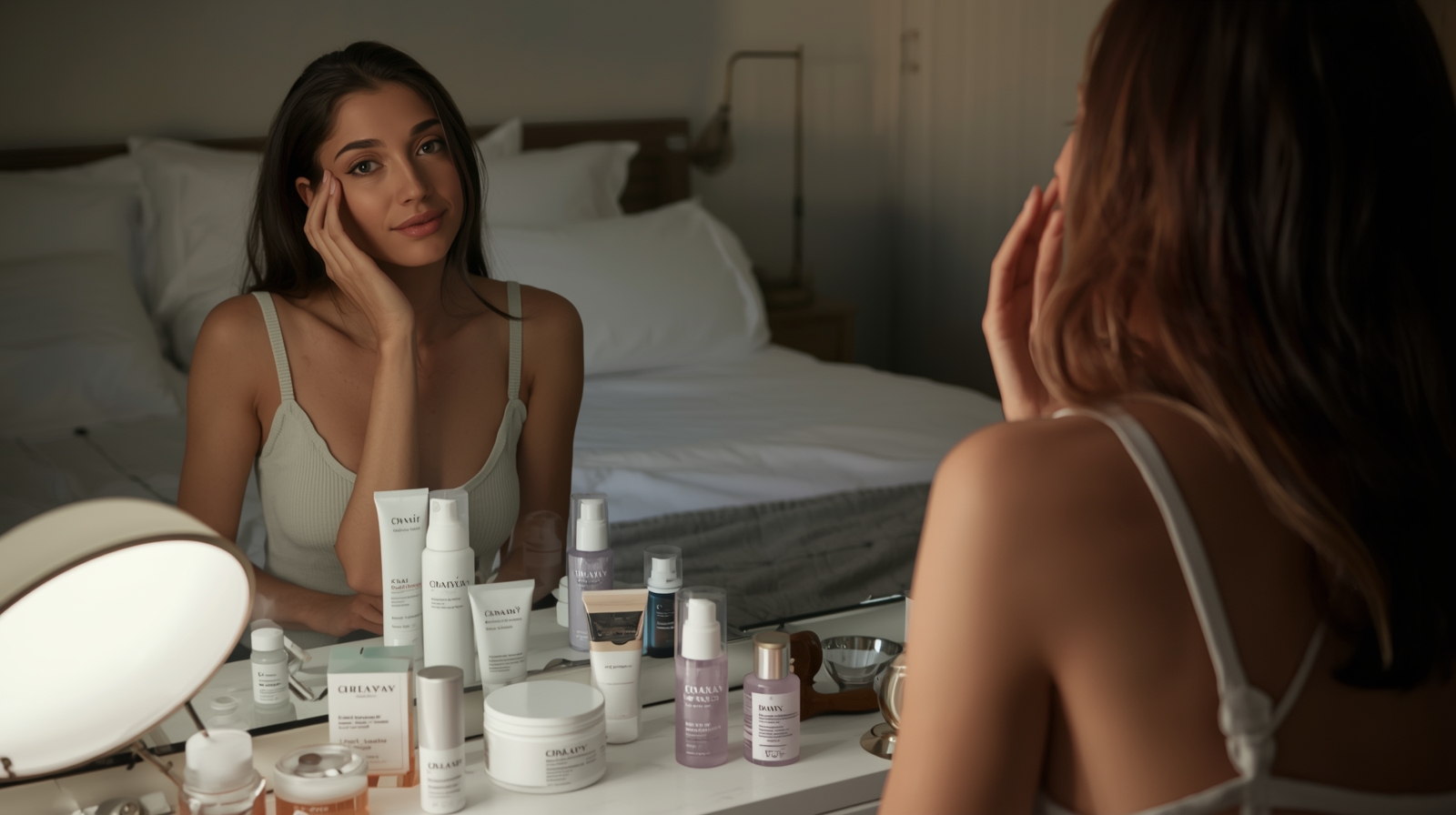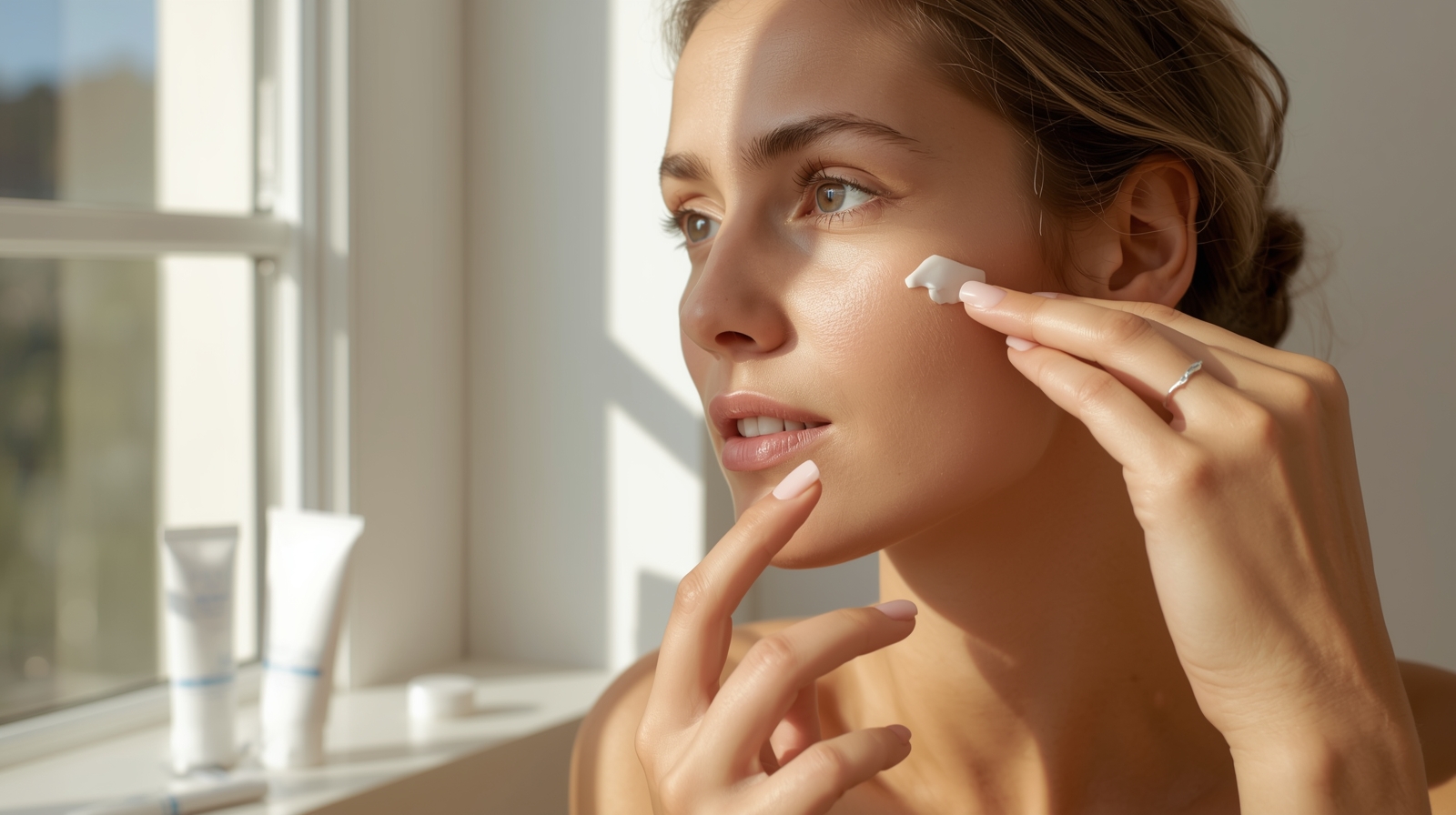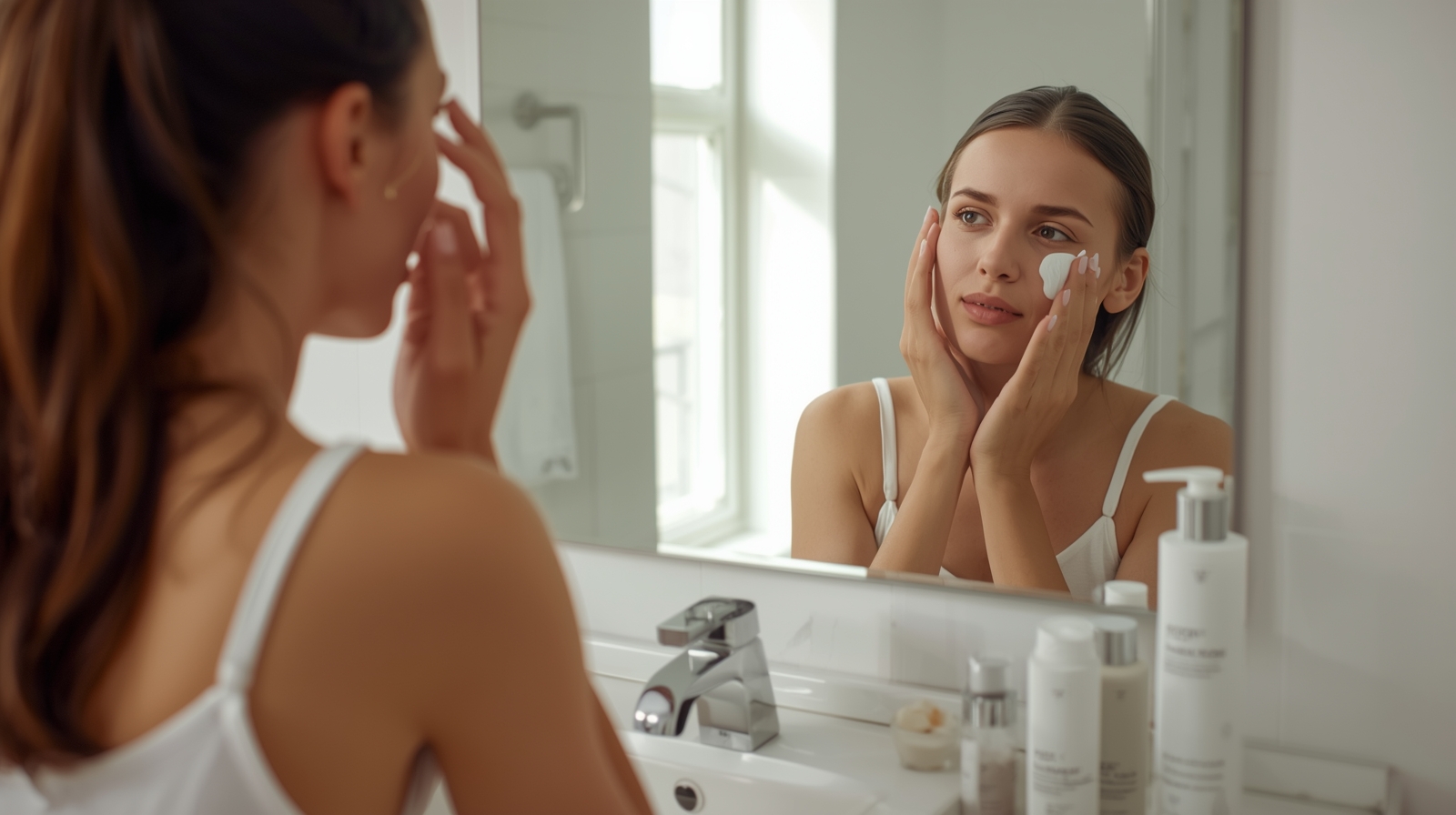A consistent skincare routine supports the skin’s natural functions and helps maintain a balanced, healthy appearance. Many women struggle to create a routine that fits into daily life. This guide breaks down a simple morning-to-night skincare plan that works for most skin types and routines. It uses clear steps, practical methods, and focuses on what the skin actually needs.
Skincare does not have to be complicated or expensive. The key is to follow a structure that cleans, protects, and nourishes the skin at the right times of day. By the end of this guide, you will know exactly what to do every morning and night for long-term results.
Section 1: Why a Daily Skincare Routine Matters
The skin is the largest organ and plays a major role in protecting the body from the environment. Every day, the skin is exposed to dirt, pollution, sweat, bacteria, and sun exposure. Without regular care, buildup on the skin can clog pores and weaken the skin barrier.
A routine helps maintain balance. Cleansing removes debris, moisturizing restores hydration, and protection steps defend against UV damage. Consistency supports the skin’s natural renewal process and promotes better long-term outcomes.
Section 2: Understanding Your Skin Type
Before building a routine, it is useful to know your skin type. There are five general categories:
- Normal Skin – feels balanced, not too oily or dry.
- Oily Skin – produces excess sebum, especially in the T-zone.
- Dry Skin – lacks moisture and may feel tight after washing.
- Combination Skin – oily in some areas, dry in others.
- Sensitive Skin – reacts easily to products or environmental changes.
Identifying your skin type helps in selecting products that match its needs. Using the wrong product can cause dryness, oil buildup, or irritation. Once you know your skin type, you can adjust this guide accordingly.
Section 3: The Morning Routine Overview
Morning skincare prepares the skin for the day. The goal is to clean off oils produced overnight, hydrate, and protect from UV and pollution. The routine has five main steps:
- Cleanse
- Tone (optional)
- Treat
- Moisturize
- Protect (SPF)
Let’s go through each step in detail.
Section 4: Step 1 – Morning Cleanse
Cleansing removes sweat, oil, and bacteria that accumulate overnight. Use a gentle cleanser that matches your skin type.
- Oily skin: Use a gel or foaming cleanser to remove oil buildup.
- Dry skin: Use a cream or hydrating cleanser that won’t strip moisture.
- Sensitive skin: Use a mild, fragrance-free formula.
Avoid scrubbing or using harsh tools. Use lukewarm water, not hot, to prevent irritation. Pat dry with a clean towel instead of rubbing.
Timing: Morning cleansing should take about 30–45 seconds.
Section 5: Step 2 – Toner (Optional)
Toner helps balance the skin’s pH and prepares it for treatment products. It can also remove leftover residue after cleansing.
- For oily skin: Choose a toner with mild exfoliating acids such as salicylic acid.
- For dry or sensitive skin: Choose an alcohol-free hydrating toner with soothing ingredients.
Apply with a cotton pad or pat directly into the skin using your hands. This step is optional, especially if your cleanser already leaves the skin balanced.
Section 6: Step 3 – Treatment Step (Serums or Actives)
This step targets specific skin concerns such as uneven tone, dehydration, or dullness. Morning treatments often include antioxidants to protect against environmental stress.
Common morning actives:
- Vitamin C serum: helps protect against pollution and UV exposure.
- Niacinamide: supports skin barrier function and regulates oil.
- Hyaluronic acid: attracts moisture to keep skin hydrated.
Apply a few drops and let it absorb before moisturizing. Avoid layering too many active ingredients to prevent irritation.
Section 7: Step 4 – Moisturizer
Moisturizer helps lock in hydration and strengthens the skin barrier. Even oily skin needs moisture to prevent excess oil production.
Select a product that fits your skin type:
- Dry skin: cream-based moisturizer.
- Oily skin: lightweight gel or lotion.
- Combination skin: use lighter texture on oily zones, richer texture on dry zones.
Apply evenly across face and neck using upward motions. Wait about a minute before applying sunscreen.
Section 8: Step 5 – Sunscreen (SPF Protection)
SPF is a critical part of any morning routine. It protects against UV rays, which are a major cause of premature skin aging and uneven tone. Use sunscreen daily, even when indoors.
How to apply:
- Use about two fingers’ length of sunscreen for face and neck.
- Apply after moisturizer, before makeup.
- Reapply every 2–3 hours if exposed to sunlight.
Choose broad-spectrum SPF 30 or higher. For sensitive skin, use mineral-based sunscreens with zinc oxide or titanium dioxide.
Section 9: Midday Skincare Tips
Throughout the day, the skin can accumulate oil and dirt. Simple maintenance helps maintain freshness.
- Use blotting papers to remove oil without disturbing makeup.
- Reapply sunscreen if you are outdoors.
- Mist the face with a hydrating spray if your skin feels dry.
Avoid touching your face frequently to reduce bacteria transfer.
Section 10: Evening Routine Overview
The evening routine helps repair the skin from daytime exposure. The goal is to remove impurities, support renewal, and restore hydration overnight. It includes these steps:
- Remove makeup
- Cleanse
- Tone (optional)
- Treat
- Moisturize or use night cream
Section 11: Step 1 – Makeup Removal
Use a makeup remover or cleansing oil to break down foundation, sunscreen, and impurities. This step ensures that pores do not get clogged overnight.
Cleansing oils and balms work for all skin types when followed by a gentle cleanser. Avoid using only wipes, as they may leave residue behind.
Massage the product into dry skin, then rinse with warm water.
Section 12: Step 2 – Second Cleanse
Follow makeup removal with a second cleanse using your usual facial cleanser. This step ensures that all traces of dirt and oil are removed.
Use gentle circular motions and rinse thoroughly. Avoid over-cleansing, which can strip the skin’s barrier and cause tightness.
Section 13: Step 3 – Night Treatment (Serums and Actives)
Nighttime is when the skin repairs itself. Using targeted treatments during this time enhances results.
Common nighttime actives:
- Retinol: supports skin renewal and helps with uneven tone.
- Peptides: support skin texture.
- Niacinamide: balances and supports barrier function.
- Hyaluronic acid: maintains hydration overnight.
Introduce one active ingredient at a time to observe skin response. Avoid mixing retinol with strong acids in the same routine.
Section 14: Step 4 – Night Moisturizer or Cream
Night creams are thicker and designed to prevent water loss during sleep. For oily or combination skin, use a lighter formula. For dry skin, choose a rich moisturizer that seals in hydration.
Apply evenly on face and neck. Do not skip moisturizer, even if the skin feels oily. Hydrated skin functions better and maintains barrier strength.
Section 15: Weekly Add-Ons
In addition to the daily routine, you can include treatments once or twice a week:
- Exfoliation: Removes dead skin cells to keep the surface smooth.
- Use a gentle exfoliant once or twice a week.
- Avoid over-exfoliating, which can weaken the barrier.
- Face Mask: Provides concentrated nourishment.
- Clay masks for oily skin.
- Hydrating masks for dry skin.
- Calming masks for sensitive skin.
- Facial Massage: Stimulates circulation and promotes relaxation.
- Use clean hands or a simple tool like a roller.
- Move from center to outer areas of the face.
Section 16: Common Skincare Mistakes
Avoid these habits that interfere with progress:
- Skipping sunscreen.
- Using too many active products at once.
- Sleeping with makeup on.
- Over-exfoliating.
- Ignoring the neck area.
Consistency and balance matter more than using numerous products.
Section 17: Hygiene and Tools
Clean tools and hands are essential in skincare. Wash hands before touching the face. Clean brushes, rollers, and pillowcases regularly. Dirty surfaces can transfer bacteria and cause breakouts.
Avoid sharing personal skincare tools with others.
Section 18: Seasonal Adjustments
Skin needs change with weather and climate.
- Winter: use richer moisturizers and hydrating serums.
- Summer: focus on lightweight products and stronger SPF.
Pay attention to how your skin responds and make gradual adjustments instead of changing everything at once.
Section 19: Lifestyle Factors Affecting Skin
Skincare is more effective when supported by healthy daily habits.
- Hydration: Drink enough water throughout the day.
- Nutrition: Include fruits, vegetables, and whole grains.
- Sleep: Aim for 7–8 hours to support recovery.
- Stress management: Practice simple relaxation or breathing exercises.
These habits support skin function from within and enhance external care.
Section 20: How to Build Consistency
Start with three key steps — cleanse, moisturize, protect. Add more steps gradually once you are consistent. Keep your products visible to remind yourself of the routine.
Morning routines should take about five minutes. Night routines can take seven to ten minutes. Consistency over time brings noticeable changes.
Section 21: Skincare Myths to Ignore
- “More products mean better skin.” The right combination matters, not the number.
- “Natural means safe.” Natural ingredients can still cause reactions.
- “Sunscreen is only for sunny days.” UV rays penetrate clouds and windows.
- “Oily skin doesn’t need moisturizer.” Lack of moisture triggers more oil production.
Focus on evidence-based skincare, not marketing trends.
Section 22: How to Choose the Right Products
When selecting products:
- Read ingredient lists.
- Patch-test before use.
- Avoid strong fragrance if you have sensitive skin.
- Store products in a cool, dry place away from sunlight.
Replace products if the texture, color, or scent changes. Expired products may irritate the skin.
Section 23: Tracking Skin Progress
Keep a skincare journal. Record products, reactions, and visible changes. This helps identify which items are effective and which may cause problems.
Take a photo once a month to monitor improvements. Consistent observation helps you make better decisions about adjustments.
Section 24: Budget-Friendly Routine Example
You do not need expensive products for effective results. Here’s a simple affordable setup:
- Cleanser: Gentle foaming or hydrating formula
- Moisturizer: Lightweight cream or gel
- Sunscreen: Broad-spectrum SPF 30
- Treatment: Vitamin C in the morning, retinol at night (optional)
Focus on consistency rather than product quantity.
Section 25: When to See a Dermatologist
If you experience severe acne, irritation, or persistent dryness, consult a dermatologist. Professional advice helps determine if you need prescription products or specific treatments.
Regular checkups can also help identify early signs of skin conditions or sun damage.



